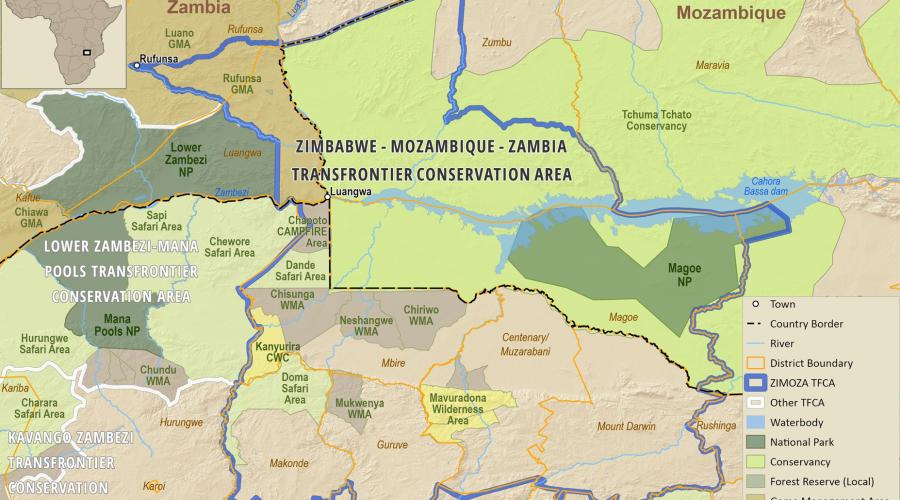The signing of a Memorandum of Agreement (MoA) between the heads of states of three African countries – Zimbabwe, Mozambique and Zambia – has seen the historic establishment of the new 39 165 square kilometre ZIMOZA Transfrontier Conservation Area (TFCA).
This is the fulfilment of a 30-year plan under the SADC’s regional integration efforts which include a TFCA development strategy which aligns with the SADC Protocols on Wildlife Conservation and Environmental Management, promoting the conservation of shared wildlife resources.
As highlighted in a Joint Communique by the three ZIMOZA TFCA partners, the TFCA covers the districts of Mbire, Muzarabani, Guruve, Mt Darwin and part of Makonde in Zimbabwe; the Administrative Posts of Zumbo-Sede and Zâmbue in Zumbu District; the District of Mágoè in its extension and at the level of the District of Cahora Bassa, the locality of Nhabando in the Administrative Post of Chitima in Mozambique; and Luangwa and the Rufunsa Districts in Zambia.
The ZIMOZA TFCA will contribute to the protection of a variety of keystone species including elephant, hippopotamus, buffalo, lion, leopard, sable and roan. The area also attracts over 300 bird species.
Mozambique President Filipe Nyusi said: “This TFCA builds on the Community Based Natural Resource policies of all three countries. The SADC member states are committed to sustainable development and the TFCA programme is a tool to align cross-border land use and sustainable development programmes.”
He added that to accurately inform management decisions and strategic planning, there is a need for the TFCA to engage communities in risk and vulnerability assessments around a host of human-environment relationships.
“It is hoped that by increasing the tourism potential of the TFCA, communities can be actively engaged and benefit from local employment and the sale of goods and services.”
Objectives to be achieved
The Joint Communique highlighted that the MoA emphasises good neighbourliness and strategic alliances to achieve several objectives, including:
- Promoting biodiversity conservation and ecosystem restoration.
- Ensuring sustainable management and utilisation of natural resources.
- Realising the economic potential of the TFCA for local communities.
- Promoting cultural heritage conservation and sustainable development.
- Developing knowledge management tools for conservation efforts.
- Enhancing cross-border cooperation for trade, investment, and socio-economic development.
- Harmonising policies and practices related to environmental management, trade, and tourism.
- Integrating TFCA management systems into national plans and policies.
Continuing collaboration
Zimbabwe will serve as the coordinating country for the next two years, followed by Mozambique and Zambia on a rotational basis. The state parties also agreed to establish a Secretariat and other institutional structures, including a funding mechanism, to facilitate the coordination and joint management of the ZIMOZA TFCA.
Zimbabwean President, Emmerson Mnangagwa, said the TFCA will be the sixth TFCA that Zimbabwe is part of.
“Community involvement is critical and this MoA is the product of consultations with the affected communities. We must expedite the planning and implementation so communities can see the benefit,” added Mnangagwa.
In his report on the new TFCA, Steve Collins, SADC TFCA Network Co-ordinator, wrote: “The establishment of ZIMOZA TFCA as the 13th TFCA in the SADC region is a significant milestone within the context of the SADC TFCA programme.
“The SADC TFCA programme aims to promote regional integration and cooperation through the sustainable management of transboundary natural resources. By bringing together multiple countries to jointly manage conservation areas, the programme seeks to enhance biodiversity conservation, support ecosystem services, and improve the livelihoods of local communities.”
CLICK HERE TO LEARN MORE ABOUT THE NEW TFCA ON THE SADC PORTAL.
Here's the map of the ZIMOZA TFCA:























